62nd Year of Education & Service
College of Agriculture / Entomology / Home
The postgraduate students are trained in economic entomology, biocontrol , host plant resistance, ecology, toxicology, physiology, taxonomy and acarology. Traditional strengths of research in the department had been in economic entomology, toxicology and apiculture. At present emphasis is on synthesizing IPM modules for different crops involving bio- agents, cultural practices, host plant resistance and eco friendly chemicals.
The M.Sc. Programme initiated in 1979-80 while Ph.D programme was started in 1992-93 PAU was the first institution in the country to start these programme and to start short range weather forecast s and issuance of Agro advisories for farmers. A net work of automatic weather stations covering all five agroclimatic zones with central facility at Ludhiana has been established.
The faculty of the department is actively involved in the running of two professional societies, viz. Indian Society for the Advancement of Insect Science and Society for Sustainable Cotton Production. The "Journal of Insect Science" is being brought out regularly by Indian Society for the Advancement of Insect Science.
College of Agriculture / Entomology / Head of Department

Name : Dr. Manmeet Brar Bhullar
Address : Head, Department of Entomology, PAU, Ludhiana
Office : 0161-2401960 Ext. 320 (O); 0161-2406114, Ext-322
Phone : +91 98729 71350
E-Mail : hodent@pau.edu
Brief Introduction
Born on 7th November, 1966 in Jalandhar, Dr Manmeet Brar Bhullar obtained her B Sc from Panjab University, Chandigarh in the year 1986 and M Sc and PhD from PAU, Ludhiana in 1989 and 1994, respectively. Dr Bhullar joined as Assistant Acarologist in the year 1996 and held the position till 2004. Later, she held the position of Senior Acarologist (2004-2010) and Principal Acarologist (2010 onwards).
Dr Bhullar has vast research experience and specialisation in Agricultural Acarology. Her research interest areas are bio-ecological studies on mites, management of mite pests of horticultural crops under field and protected cultivation, resistance monitoring studies in mites to acaricides, genetic variability studies on family Tetranychidae and taxonomic studies on family Phytoseiidae and Prostigmatid predatory mites. She has been involved in development of 9 technologies for integrated management of mites on vegetable and fruit crops, besides being associated with varietal screening of vegetable crops for mites. She is currently managing All India Network Project on Agricultural Acarology, ICAR, New Delhi as Principal Investigator and Biosystematic studies of phytoseiid mites on fruit crops from Trans Gangetic plain and North Western Himalaya, SERB-DST, New Delhi as co-PI. She organised Vth” and IXth Group Meeting of All India Network Project on Agricultural Acarology” from 6-7 November, 1996 and from 11-12 April, 2005 respectively at PAU Ludhiana, India.
She has published 69 peer reviewed research papers, 8 books/bulletins, 7 extension bulletins, 1 review chapter, 8 book chapters and 12 popular articles. She has presented 30 papers in conferences/symposiums/seminars at national and international level. She delivered 25 invited lectures in various summer/winter schools in Acarology and Systematics. She is involved in Post-graduate courses viz. M.Sc (Insect Morphology and Systematics; Principles of Insect Classification, Insect Taxonomy and General Acarology) and PhD (Advanced Insect Systematics). She has guided 6 MSc students and 3 PhD, as major advisor on different aspects of basic and applied aspects of plant associated mites.
She is the recipient of CSIR Fellowship - Bio-ecological studies on parasitic Copepoda and Branchiura of fishes from North India in 1990 and Jay A. Yoder Fellowship by the Acarology Development Foundation, Michigan, USA in 2011 for attending the Summer Acarology programme at Ohio State University, Ohio (USA).
College of Agriculture / Entomology / Thrust Areas
- To develop effective resident instruction program in entomology
- To develop and strengthen different fields of specialisation in entomology
- To generate basic and applied information based on ecology, systematics, toxicology, physiology, molecular biologyand economic entomology to develop sustainable insect pest management in different crops/cropping systems
- To develop technology for propagation and strain improvement of useful insects and quality of their products
- To transfer technology developed for management of insect pests to end users
College of Agriculture / Entomology / Faculty
Faculty
College of Agriculture / Entomology / Faculty Distinctions
| Name of Award | No. of faculty members |
| Republic Day Award by Govt. of India | 3 |
| Rafi Ahmed Kidwai Award | 6 |
| Jawahar Lal Nehru Award | 2 |
| PAU Meritorious Teacher Award | 2 |
| Dr G.S. Khush Distinguished Professor Award | 1 |
| ICAR Team Award | 1 |
| Punjab Sarkar Parman Patar | 2 |
| Roll of Honour Awards | 2 |
| Hexamar award | 1 |
| Best Book Awards | 2 |
College of Agriculture / Entomology / Important Achievements
- Developed and disseminated IPM technologies against key insect pests of cotton, rice, sugarcane and maize.
- Successful management of sugarcane borers with bioagents, Trichogramma chilonis and Trichogramma japonicum on large scale in collaboration with state sugar mills.
- National level strategy for management of mealybug and whitefly in cotton was developed and disseminated among farmers in Punjab.
- First pesticide residue analysis laboratory accredited by National Accreditation Board for Testing and Calibration Laboratories (NABL), GOI among SAUs across India.
- Pioneer in successful introduction, multiplication and establishment of honey bee, Apis mellifera in India.
College of Agriculture / Entomology / Current Projects
List of projects
| Projects | Name of the scheme | Teachers associated |
| State funded projects | Estt. of Department of Entomology, Plan-05 (PC 1037.1) | Dr Pardeep Kumar Chhuneja |
| Estt. of Department of Entomology, Plan-05 (PC 1037.2) | ||
| Estt. of Department of Entomology, Plan 5 (PC 1037.3) | ||
| Human Resource development specialized in apiculture, SCSP-4 (PC 1314.4) | Dr. Jaspal Singh | |
| Integrated Pest and disease management in important crops (PC 1313.20) | Dr Kamaldeep Singh Sangha | |
| Improving bee health and augmenting hive productivity through stock improvement [1313.28) | Dr. Jaspal Singh | |
| Human Resource development specialized in apiculture, SCSP-9 (PC 1314.3) | Dr Jaspal Singh | |
| Integrated pest and disease management in important crops, RKVY-19.1 (PC 1313.20) | Dr Kamaldeep Singh Sangha | |
| Improving bee health and augmenting hive productivity through stock improvement, RKVY 26.1 (1313.28) | Dr Jaspal Singh | |
| Human Resource development specialized in apiculture, SCSP-9 (PC 1314.3) | Dr Jaspal Singh | |
| Improving bee health and augmenting hive productivity through stock improvement, RKVY 26.1 (1313.28) | Dr Jaspal Singh | |
| AICRP/NPIB projects | All India Coordinated Research Project on Biological Control of Crop Pests, ICAR-33 (PC-2041) | Drs Neelam Joshi and P.S. Shera |
| All India Coordinated Research Project on Honey Bees & Pollinators, ICAR-34 (PC-2042) | Drs Jaspal Singh, Harminder Kaur, Amit Choudhary | |
| All India Network Project on Agricultural Acarology, ICAR-36 (PC-2044) | Drs Manmeet Brar Bhullar, Paramjit Kaur | |
| i) All India Network Project on Pesticide Residues, ICAR-35 (PC-2043) ii) Monitoring of pesticides at National level (CSS) | Drs Balpreet Kaur Kang, Kousik Maldal | |
| Network Project on Insect Biosystematics, ICAR-66 (PC-2045) | Dr Prakash Chand Pathania | |
| Network Project on Conservation of Lac Insect Genetic Resources, ICAR-67 (PC 2283) | Drs P.S. Shera, Rabinder Kaur and Sudhendu Sharma | |
| Competitive projects | Biosystematic studies and effect of weather parameters on fruit flies (Diptera) from Guava and Cucurbits in Punjab, UGC-13 (PC 7055) | Dr Prasad S. Burange |
| Characterization of Entomopathogenic fungi and their role as bio control agent of crop pests, UGC-19 (PC 7059) SUMMARY
Soil and insect cadavers collected from different districts of Punjab, were screened by Galleria bait method for isolation of entomopathogenic fungi. Native fungal isolates along with procured fungal isolates Beauveria bassiana,Metarhizium anisopliae, P. fumosoroseus and Nomureae rileyiwere recorded for morphologicaliy and biochemically characteristics . All these procured and local fungal isolates were evaluated against insect hosts of cole crops namely Plutella xylostella, Spodoptera litura and Pieris brassicae. Among all procured fungal isolates the fungal isolate B. bassiana MTCC 4495 was most effective and among native fungal isolates isolate JS-B5 and GR-B1 were effective .All these entomopathogenic fungal isolates were recorded for their cuticle degrading enzymes activity and maximum enzyme activity was recorded in B. bassiana MTCC 4495 and GR-B1 on sixth day. Scanning electron microscopy of selected fungal isolate was conducted and variation in growth pattern of these entomopathogenic fungi was recorded on surface of Plutella xylostella at different time interval. The results clearly exhibited little but variation in the extent of infection depicted in terms of spore germination on the cuticle post inoculation. Two native potential isolates JS-B5 and GR-B1 were identified as Beauveria bassiana. In vitro experiments were conducted to study the compatibility of eight different pesticides with entomopathogenic fungi and it was concluded that all pesticides treatments had detrimental effect on growth and germination of entomopathogenic fungi. Among all these treatments Spinosad was most compatible pesticide with entomopathogens which exhibited below 37% percent growth inhibition of fungi over control. This was followed by melathion, rogor, triazophos, ethion, propargite, chlorpyrifos and quinalphos respectively. Pesticide quinalphos was most toxic to all entomopathogenic isolates and exhibited maximum more than ninety percent inhibition over control and was not compatible.and thus this study gives choice to farmers and researchers to select insecticide in IPM programme. |
Dr Neelam Joshi | |
| Insecticide resistance and resurgence risk assessment in rice plant hoppers, Sogatella furcifera (Horváth) and Nilaparvata lugens (Stal), UGC-22 (PC 7056) | Dr K.S. Suri | |
| Locomotory behaviour of important lepidopterous pests, UGC-27 (PC 7053) Summary
Locomotory behaviour of different populations of P. xylostella, S. litura and H. armigera from different regions of Punjab and toxicity of some commonly used insecticides were studied. The order of toxicity of the insecticides evaluated against P. xylostella populations was found to be Chlorantraniliprole > flubendiamide > Spinosad > quinalphos > fenvalrate; for S. litura it was chlorantraniliprole > novaluron > thiodicarb > chlorpyriphos > deltamethrin & for H. armigera was found to be Chlorantraniliprole > Spinosad > Indoxacarb > Chlorpyriphos > Deltamethrin. The distance travelled and speed for the larvae of P. xylostella, S. litura and H. armigera from Ludhiana district was maximum. For P. xylostella it was maximum when allowed to walk on fenvalerate-treated surface, followed by those moved on quinalphos, spinosad, flubendiamide, chlorantraniliprole-treated surfaces. For larvae of S. litura the trend was deltamethrin-treated surface followed by chlorpyriphos, thiodicarb, novaluron, chlorantraniliprole treated surface. For the larvae of H. armigera it was maximum on deltamethrin-treated surface followed by those moved on chlorpyriphos, indoxacarb, spinosad and chlorantraniliprole-treated surfaces. The minimum distance travelled was recorded on the untreated wax-coated paper in 5 minutes. Same trend was observed by larval populations from Kapurthala & Amritsar district population for distance travelled & speed.The turn angle of P. xylostella and S. litura larval population from Amritsar district was significantly higher as compared to those from Kapurthala followed by Ludhiana district. For P. xylostella from Amritsar district trend was chlorantraniliprole-treated surface followed by those moved on flubendiamide, spinosad, quinalphos, fenvalerate-treated surfaces. For Ludhiana district turn angle of larve was maximum when allowed to walk on chlorantraniliprole-treated surface followed by those moved on flubendiamide, spinosad, quinalphos and fenvalerate-treated surfaces. For S. litura from Amritsar district trend was chlorantraniliprole-treated surface followed by those moved on novaluron, thiodicarb, chlorpyriphos and deltamethrin-treated surfaces. For Ludhiana district turn angle of larve was maximum when allowed to walk on chlorantraniliprole-treated surface, followed by those moved on novaluron, thiodicarb, chlorpyriphos, deltamethrin-treated surfaces. The turn angle of H. armigera larval population from Ludhiana district was maximum when allowed to walk on chlorantraniliprole-treated surface, followed by those spinosad, indoxacarb, chlorpyriphos and deltamethrin-treated surfaces. For larval populations from Amritsar district trend was chlorantraniliprole-treated surface followed by those moved on spinosad, indoxacarb, chlorpyriphos and deltamethrin-treated surfaces. The minimum turn angle was recorded for untreated surface for both the populations.Certain locomotory behavioural variations has been determined and pronounced behavioural differences were registered in the different populations of P. xylostella, S. litura and H. armigera. The more resistant larvae travelled less distance on insecticide-treated/untreated surface with higher value of turn angle whereas, less resistant larvae moved fast with lesser turn angle. This indicates that inter-population variation might reflect differences in insects’ sensory perception of insecticides and could lead to development of behavioural resistance if such differences are inheritable. Hence locomotory behaviour plays a crucial role in resistance development. Also, this knowledge may help to find management solutions to these serious lepidopterous pests. Thus, locomotion plays a major role in determining insecticide exposure and should always be considered in investigating the behavioural responses of different insect pests. |
Dr Anureet Kaur Chandi | |
| Identification and validation of newer approaches for the management of whitefly Bemisia tabaci (Hemiptera: Aleyrodidae) (NASF-ICAR) | Dr Vikas Jindal | |
| Functional and pharmacological characterization of ecdysis triggering hormone and its receptor for developing new generation insecticides against whitefly, Bemisia tabaci (SERB) | Dr Vikas Jindal | |
| Bee-Keeping, Department of Entomology Plan-69 (PC-3046) | Dr Jaspal Singh | |
| NHM | Bio-intensive Pest Management Practices in Important Vegetable Crops Under Protected Cultivation in Punjab | Drs Sudhendu Sharma, P.S. Shera, Rabinder Kaur & Neelam Joshi |
| NABARD | Validation and Dissemination of Biocontrol based Integrated Pest Management Technology in Sugarcane | Drs Rabinder Kaur, Sudhendu Sharma & P.S. Shera |
| Adhoc Projects | ||
| Evaluating impact of Neonicotinoids on Pollinators (ICAR) | Dr Jaspal Singh | |
| Fund for improvement of S&T infrastructure in Universities and Higher Educational Institutions (FIST) grant, CSS-90 (PC 6209) | Dr Ranjit Singh Gill | |
| Impact of indiscriminate use of chemical fertilizers and pesticides, CSS-93 (PC 6212) | Dr K.S. Suri | |
| Dissemination of Integrated Pest Management strategies for whitefly on Cotton in Punjab, Misc-79 (PC 4598) | Drs Vijay Kumar, Harpal Singh Bhullar | |
| Cotton Development Programme in Punjab for Kharif 2016, Misc-70 (PC 4596) | Drs Vijay Kumar, Harpal Singh Bhullar | |
| Integrated Pest Management on Vegetables | Drs Smriti Sharma, Rubaljot Kooner | |
| Farm Advisory Service Handling Adaptive trials Evaluation of Brands | Drs Baljit Singh, Amandeep Kaur, Manpreet Kaur Saini | |
| Plant Clinic Lab at Farmers Service Centre | Dr Subhash Singh |
College of Agriculture / Entomology / Important Publications
Research Paper (NAAS rating >7.0)
- An R,Suri K S, Jurat-Feuntes J and Grewal P (2017) Dynamics of transcriptomic response to infection by the nematode,Heterorhabditis bacteriophoraand its bacterial symbiont,Photorhabdus temperatainHeliothis virescenslarvae.Insect Molecular Biology 26(5): 584-600. (doi:10.1111/imb.12321) (NAAS Rating = 8.87)
- Basedow T, Hua Lei and Agarwal N (2006) The infestation of Vicia faba L. (Fabaceae) by Aphis fabae (Scop.) (Homoptera: Aphididae) under the influence of Lamiaceae (Ocimum basilicumL. and Satureja hortensisL.). Journal of Pest Science 79: 149-54. (NAAS Rating = 9.10)
- Behere G T, Firake D M, Burange P S, Firake P D, Azad Thakur N S and Ngachan S V (2015) Utility of ITS1 as a molecular tool for reliable identification of Henosepilachna pusillanima and H. septima (Coleoptera: Coccinellidae). Journal of Genetics 94: e19-e23. (NAAS Rating = 7.01)
- Burange P S, Roehrdanz R L and Boetel M A (2012) Geographically based diversity in mitochondrial DNA of North American Lygus lineolaris (Hemiptera: Miridae). Annals of the Entomological Society of America 105 (6): 917-29. (NAAS Rating = 7.5)
- Chahil G S, Mandal K, Sahoo S K, Battu R S and Singh B (2014) Risk assessment of β-cyfluthrin and imidacloprid in chickpea pods and leaves. Ecotoxicology and Environmental Safety 101: 177-183. (NAAS Rating = 8.48)
- Chandi A K and Singh G (2017) Locomotory behaviour of susceptible and resistant Plutella xylostella (Linnaeus) Lepidoptera: Plutellidae. Phytoparasitica45:541-548 (NAAS Rating = 7.03)
- Garg N, Singla N. Jindal V and Babbar B K (2017) Studies on bromadiolone resistance in Rattus rattus populations from Punjab, India. Pestic. Biochem. Physiol. 139: 24-31 (NAAS Rating = 8.39)
- Grover, S, Jindal V, Banta G, Tanning C N T, Smagghe G and Christiaens O (2018) Potential of RNA interference in the study and management of whitefly, Bemisia tabaci. Arch. Insect Biochem. Physiol. e21522: 1-17. https://doi.org/10.1002/arch.21522 (NAAS Rating = 7.53)
- Jyot G, Mandal K and Singh B (2015) Effect of dehydrogenase, phosphatase and urease activity in cotton soil after applying thiamethoxam as seed treatment. Environmental Monitoring and Assessment 187(5): 298. (NAAS Rating = 7.68)
- Jyot G, Mandal K, Battu R S and Singh B (2013) Estimation of chlorpyriphos and cypermethrin residues in chilli (Capsicum annuum L.) by gas liquid chromatograph. Environmental Monitoring and Assessment 185: 5703-714. (NAAS Rating = 7.5)
- Jyot G, Mandal K, Chahil G S and Singh B (2014) Persistence and risk assessment of emamectin benzoate residues on okra fruits and soil. Environmental Technology 35: 1736-743. (NAAS Rating = 7.5)
- Kang B K, Jyot G, Sharma R K, Battu R S and Singh B (2010) Persistence of propargite on okra under subtropical conditions at Ludhiana, Punjab, India. Bulletin of Environmental Contamination and Toxicology 85: 414-18. (NAAS Rating = 7.6)
- Kang B K, Jyot G, Sharma R K, Sahoo S K, Battu R S and Singh B (2009) Dissipation kinetics of propargite in brinjal fruits under subtropical conditions of Punjab, India. Bulletin of Environmental Contamination and Toxicology 82: 248-250. (NAAS Rating = 7.6)
- Kaur P and Dilawari V K (2011) Inheritance of resistance to Bacillus thuringiensis Cry1Ac toxin in Helicoverpa armigera (Hübner) (Lepidoptera: Noctuidae) from India. Pest Management Science 67: 1294-1302. (NAAS Rating = 7.7)
- Kaur B, Gupta V K and Jindal V (2014) Molecular phylogenetic analysis of Indian strains of Helicoverpa armigera nucleopolyhedrovirus (HearNPV). Indian J. Biotechnol. 13: 186-194. (NAAS Rating = 7.0)
- Makkar, G S; Chhuneja, P K and Gill, M S (2010). Beekeeping: The future growth engine for Indian farmers.Bee World 87(3): 47-49. (NAAS Rating = 7.93)
- Mandal K and Singh B (2010) Magnitude and frequency of pesticide residues in farmgate samples of cauliflower in Punjab, India. Bulletin of Environmental Contamination and Toxicology 85: 423-26. (NAAS Rating = 7.5)
- Mandal K and Singh B (2013) Dissipation of fipronil granule formulation in sugarcane field soil. Ecotoxicology and Environmental Safety 88: 142-47. (NAAS Rating = 7.7)
- Mandal K and Singh B (2013) Persistence of fipronil and its metabolites in sandy loam and clay loam soils under laboratory conditions. Chemosphere 91: 1596-603. (NAAS Rating = 7.9)
- Mandal K, Kaur R, Sahoo S K, Arora R and Singh B (2014) Degradation pattern and risk assessment of chlorantraniliprole on berseem (Trifolium alexandrinum L.) using high performance liquid chromatography. Chemosphere 112: 100-104. (NAAS Rating: 9.13)
- Mandal K, Singh B, Jariyal M and Gupta V K (2013) Microbial degradation of fipronil by Bacillus thuringiensis. Ecotoxicology and Environmental Safety 93: 87-92. (NAAS Rating = 7.7)
- Mann R S, Gill R S, Dhawan A K and Shera P S (2010) Relative abundance and damage by target and non-target insects on Bollgard and Bollgard II cotton cultivars. Crop Protection 29: 793-801. (NAAS Rating = 7.50)
- Sahoo S K, Chahil G S, Mandal K, Battu R S and Singh B (2012) Estimation of β-cyfluthrin and imidacloprid in okra fruits and soil by chromatography technique. Journal of Environmental Science and Health, Part B 47 (1): 42-50. (NAAS Rating = 7.5)
- Sahoo S K, Jyot G, Battu R S and Singh B (2012) Dissipation kinetics of trifloxystrobin and tebuconazole on chilli and soil. Bulletin of Environmental Contamination and Toxicology 88: 368-71. (NAAS Rating = 7.5)
- Sahoo S K, Mandal K, Kaur R, Battu R S and Singh B (2013) Persistence of thiacloprid residues on brinjal (Solanum melongena L.). Environmental Monitoring and Assessment 185: 7935-943. (NAAS Rating = 7.59)
- Sahoo S K, Mandal K, Kumar R and Singh B (2014) Analysis of fluopicolide and propamocarb residues on tomato and soil using QuEChERS sample preparation method in combination with GLC and GCMS. Food Analytical Methods 7: 1032-042. (NAAS Rating = 7.97)
- Sahoo S K, Mandal K, Singh G, Kumar R, Chahil G S, Battu R S and Singh B (2013) Residual behaviour of quizalofop ethyl on onion (Allium cepa L.). Environmental Monitoring and Assessment 185: 1711-718. (NAAS Rating = 7.5)
- Sarao P S and H Kaur (2014) Efficacy of Fertera 0.4 % GR (chlorantraniliprole) against stem borers and leaf folder insect-pests of basmati rice. Journal of Environmental Biology 35: 815-19. (NAAS Rating = 7.1)
- Sharma S and Singh B (2014) Metabolism and persistence of imidacloprid in different types of soils under laboratory conditions. International Journal of Environmental Analytical Chemistry 94: 1100-12. (NAAS Rating = 7.24)
- Shera P S, Arora R and Singh P (2015) Comparative susceptibility of transgenic Bt cotton hybrids to Earias spp. and other non-target insects. Crop Protection 71: 51-59. (NAAS Rating = 7.54)
- Singh B, Kular J S and Mahal M S (2014) Relative abundance and damage of some insect pests of wheat under different tillage practices in rice-wheat cropping in India. Crop Protection 61: 16-22. (NAAS Rating = 7.54)
- Singh B, Mandal K, Sahoo S K, Urvashi and Battu R S (2013) Development and validation of HPLC method for determination of spirotetramat and spirotetramat cis enol in various vegetables and soil. Journal of AOAC International 96: 670-75. (NAAS Rating = 7.39)
- Singh G, Chahil G S, Jyot G, Battu R S and Singh B (2013) Degradation dynamics of emamectin benzoate on cabbage under subtropical conditions of Punjab, India. Bulletin of Environmental Contamination and Toxicology 91: 129-33. (NAAS Rating = 7.5)
- Singh G, Sahoo S K, Takkar R, Battu R S, Singh B and Chahil G S (2011) Residual behaviour and risk assessment of flubendiamide on Chickpea (Cicer arietinum L.). Chemosphere 84: 1416-421. (NAAS Rating = 7.9)
- Singh H and Chhuneja P K (1987).Comparativeperformanceofh.v.,1.v. andu.1.v.spraysfor the control of cotton bollworms.Tropical Pest Management 33(1): 73-80.(NAAS Rating = 7.09)
- Suri K S and Singh G (2011) Insecticide-induced resurgence of the white backed planthopper, Sogatella furcifera (Horvath) (Hemiptera: Delphacidae) on rice varieties with different levels of resistance. Crop Protection 30: 118-24. (NAAS Rating = 7.50)
- Urvashi, Jyot G, Sahoo S K, Kaur S, Battu R S and Singh B (2012) Estimation of indoxacarb residues by QuEChERS technique and its degradation pattern in cabbage. Bulletin of Environmental Contamination and Toxicology 88: 372-76. (NAAS Rating = 7.5)
Books
- An R,Suri K S, Jurat-Feuntes J and Grewal P (2017) Dynamics of transcriptomic response to infection by the nematode,Heterorhabditis bacteriophoraand its bacterial symbiont,Photorhabdus temperatainHeliothis virescenslarvae.Insect Molecular Biology 26(5): 584-600. (doi:10.1111/imb.12321) (NAAS Rating = 8.87)
- Basedow T, Hua Lei and Agarwal N (2006) The infestation of Vicia faba L. (Fabaceae) by Aphis fabae (Scop.) (Homoptera: Aphididae) under the influence of Lamiaceae (Ocimum basilicumL. and Satureja hortensisL.). Journal of Pest Science 79: 149-54. (NAAS Rating = 9.10)
- Behere G T, Firake D M, Burange P S, Firake P D, Azad Thakur N S and Ngachan S V (2015) Utility of ITS1 as a molecular tool for reliable identification of Henosepilachna pusillanima and H. septima (Coleoptera: Coccinellidae). Journal of Genetics 94: e19-e23. (NAAS Rating = 7.01)
- Burange P S, Roehrdanz R L and Boetel M A (2012) Geographically based diversity in mitochondrial DNA of North American Lygus lineolaris (Hemiptera: Miridae). Annals of the Entomological Society of America 105 (6): 917-29. (NAAS Rating = 7.5)
- Chahil G S, Mandal K, Sahoo S K, Battu R S and Singh B (2014) Risk assessment of β-cyfluthrin and imidacloprid in chickpea pods and leaves. Ecotoxicology and Environmental Safety 101: 177-183. (NAAS Rating = 8.48)
- Chandi A K and Singh G (2017) Locomotory behaviour of susceptible and resistant Plutella xylostella (Linnaeus) Lepidoptera: Plutellidae. Phytoparasitica45:541-548 (NAAS Rating = 7.03)
- Garg N, Singla N. Jindal V and Babbar B K (2017) Studies on bromadiolone resistance in Rattus rattus populations from Punjab, India. Pestic. Biochem. Physiol. 139: 24-31 (NAAS Rating = 8.39)
- Grover, S, Jindal V, Banta G, Tanning C N T, Smagghe G and Christiaens O (2018) Potential of RNA interference in the study and management of whitefly, Bemisia tabaci. Arch. Insect Biochem. Physiol. e21522: 1-17. https://doi.org/10.1002/arch.21522 (NAAS Rating = 7.53)
- Jyot G, Mandal K and Singh B (2015) Effect of dehydrogenase, phosphatase and urease activity in cotton soil after applying thiamethoxam as seed treatment. Environmental Monitoring and Assessment 187(5): 298. (NAAS Rating = 7.68)
- Jyot G, Mandal K, Battu R S and Singh B (2013) Estimation of chlorpyriphos and cypermethrin residues in chilli (Capsicum annuum L.) by gas liquid chromatograph. Environmental Monitoring and Assessment 185: 5703-714. (NAAS Rating = 7.5)
- Jyot G, Mandal K, Chahil G S and Singh B (2014) Persistence and risk assessment of emamectin benzoate residues on okra fruits and soil. Environmental Technology 35: 1736-743. (NAAS Rating = 7.5)
- Kang B K, Jyot G, Sharma R K, Battu R S and Singh B (2010) Persistence of propargite on okra under subtropical conditions at Ludhiana, Punjab, India. Bulletin of Environmental Contamination and Toxicology 85: 414-18. (NAAS Rating = 7.6)
- Kang B K, Jyot G, Sharma R K, Sahoo S K, Battu R S and Singh B (2009) Dissipation kinetics of propargite in brinjal fruits under subtropical conditions of Punjab, India. Bulletin of Environmental Contamination and Toxicology 82: 248-250. (NAAS Rating = 7.6)
- Kaur P and Dilawari V K (2011) Inheritance of resistance to Bacillus thuringiensis Cry1Ac toxin in Helicoverpa armigera (Hübner) (Lepidoptera: Noctuidae) from India. Pest Management Science 67: 1294-1302. (NAAS Rating = 7.7)
- Kaur B, Gupta V K and Jindal V (2014) Molecular phylogenetic analysis of Indian strains of Helicoverpa armigera nucleopolyhedrovirus (HearNPV). Indian J. Biotechnol. 13: 186-194. (NAAS Rating = 7.0)
- Makkar, G S; Chhuneja, P K and Gill, M S (2010). Beekeeping: The future growth engine for Indian farmers.Bee World 87(3): 47-49. (NAAS Rating = 7.93)
- Mandal K and Singh B (2010) Magnitude and frequency of pesticide residues in farmgate samples of cauliflower in Punjab, India. Bulletin of Environmental Contamination and Toxicology 85: 423-26. (NAAS Rating = 7.5)
- Mandal K and Singh B (2013) Dissipation of fipronil granule formulation in sugarcane field soil. Ecotoxicology and Environmental Safety 88: 142-47. (NAAS Rating = 7.7)
- Mandal K and Singh B (2013) Persistence of fipronil and its metabolites in sandy loam and clay loam soils under laboratory conditions. Chemosphere 91: 1596-603. (NAAS Rating = 7.9)
- Mandal K, Kaur R, Sahoo S K, Arora R and Singh B (2014) Degradation pattern and risk assessment of chlorantraniliprole on berseem (Trifolium alexandrinum L.) using high performance liquid chromatography. Chemosphere 112: 100-104. (NAAS Rating: 9.13)
- Mandal K, Singh B, Jariyal M and Gupta V K (2013) Microbial degradation of fipronil by Bacillus thuringiensis. Ecotoxicology and Environmental Safety 93: 87-92. (NAAS Rating = 7.7)
- Mann R S, Gill R S, Dhawan A K and Shera P S (2010) Relative abundance and damage by target and non-target insects on Bollgard and Bollgard II cotton cultivars. Crop Protection 29: 793-801. (NAAS Rating = 7.50)
- Sahoo S K, Chahil G S, Mandal K, Battu R S and Singh B (2012) Estimation of β-cyfluthrin and imidacloprid in okra fruits and soil by chromatography technique. Journal of Environmental Science and Health, Part B 47 (1): 42-50. (NAAS Rating = 7.5)
- Sahoo S K, Jyot G, Battu R S and Singh B (2012) Dissipation kinetics of trifloxystrobin and tebuconazole on chilli and soil. Bulletin of Environmental Contamination and Toxicology 88: 368-71. (NAAS Rating = 7.5)
- Sahoo S K, Mandal K, Kaur R, Battu R S and Singh B (2013) Persistence of thiacloprid residues on brinjal (Solanum melongena L.). Environmental Monitoring and Assessment 185: 7935-943. (NAAS Rating = 7.59)
- Sahoo S K, Mandal K, Kumar R and Singh B (2014) Analysis of fluopicolide and propamocarb residues on tomato and soil using QuEChERS sample preparation method in combination with GLC and GCMS. Food Analytical Methods 7: 1032-042. (NAAS Rating = 7.97)
- Sahoo S K, Mandal K, Singh G, Kumar R, Chahil G S, Battu R S and Singh B (2013) Residual behaviour of quizalofop ethyl on onion (Allium cepa L.). Environmental Monitoring and Assessment 185: 1711-718. (NAAS Rating = 7.5)
- Sarao P S and H Kaur (2014) Efficacy of Fertera 0.4 % GR (chlorantraniliprole) against stem borers and leaf folder insect-pests of basmati rice. Journal of Environmental Biology 35: 815-19. (NAAS Rating = 7.1)
- Sharma S and Singh B (2014) Metabolism and persistence of imidacloprid in different types of soils under laboratory conditions. International Journal of Environmental Analytical Chemistry 94: 1100-12. (NAAS Rating = 7.24)
- Shera P S, Arora R and Singh P (2015) Comparative susceptibility of transgenic Bt cotton hybrids to Earias spp. and other non-target insects. Crop Protection 71: 51-59. (NAAS Rating = 7.54)
- Singh B, Kular J S and Mahal M S (2014) Relative abundance and damage of some insect pests of wheat under different tillage practices in rice-wheat cropping in India. Crop Protection 61: 16-22. (NAAS Rating = 7.54)
- Singh B, Mandal K, Sahoo S K, Urvashi and Battu R S (2013) Development and validation of HPLC method for determination of spirotetramat and spirotetramat cis enol in various vegetables and soil. Journal of AOAC International 96: 670-75. (NAAS Rating = 7.39)
- Singh G, Chahil G S, Jyot G, Battu R S and Singh B (2013) Degradation dynamics of emamectin benzoate on cabbage under subtropical conditions of Punjab, India. Bulletin of Environmental Contamination and Toxicology 91: 129-33. (NAAS Rating = 7.5)
- Singh G, Sahoo S K, Takkar R, Battu R S, Singh B and Chahil G S (2011) Residual behaviour and risk assessment of flubendiamide on Chickpea (Cicer arietinum L.). Chemosphere 84: 1416-421. (NAAS Rating = 7.9)
- Singh H and Chhuneja P K (1987).Comparativeperformanceofh.v.,1.v. andu.1.v.spraysfor the control of cotton bollworms.Tropical Pest Management 33(1): 73-80.(NAAS Rating = 7.09)
- Suri K S and Singh G (2011) Insecticide-induced resurgence of the white backed planthopper, Sogatella furcifera (Horvath) (Hemiptera: Delphacidae) on rice varieties with different levels of resistance. Crop Protection 30: 118-24. (NAAS Rating = 7.50)
- Urvashi, Jyot G, Sahoo S K, Kaur S, Battu R S and Singh B (2012) Estimation of indoxacarb residues by QuEChERS technique and its degradation pattern in cabbage. Bulletin of Environmental Contamination and Toxicology 88: 372-76. (NAAS Rating = 7.5)
College of Agriculture / Entomology / Academic Programs
POSTGRADUATE COURSES
| Course No. | Cr. Hrs | Title of course |
| Ent. 501 | 2+1 | Insect Morphology and Systematics |
| Ent. 502 | 2+1 | Insect Anatomy and Physiology |
| Ent. 503 | 2+1 | Classification of Insects |
| Ent. 504 | 2+1 | Insect Ecology |
| Ent. 505 | 2+1 | Toxicology of Insecticides |
| Ent. 506 | 2+1 | Biocontrol of Insect Pests |
| Ent. 507 | 2+1 | Plant Resistance to Insects |
| Ent. 508 | 2+1 | Integrated Pest Management |
| Ent. 509/Pl. Path. 509/Nem. 509 | 2+1 | Molecular Approaches in Plant Protection |
| Ent. 510/Pl. Path. 510/Nem. 510 | 2+0 | Quarantine in Plant Protection |
| Ent. 511 | 2+1 | Insect Vectors of Plant Pathogens |
| Ent. 512 | 2+1 | Commercial Entomology |
| Ent. 513 | 2+1 | Storage Entomology |
| Ent. 514 | 1+1 | General Acarology |
| Ent. 591 | 1 | Seminar |
| Ent. 601 | 2+0 | Advanced Insect Systematics |
| Ent. 602 | 2+0 | Advanced Insect Physiology |
| Ent. 603 | 2+0 | Advanced Insect Pest Management |
| Ent. 604 | 2+0 | Advanced Insect Ecology |
| Ent. 605 | 2+0 | Advanced Biological Control |
| Ent. 606 | 2+1 | Advanced Insecticides Toxicology |
| Ent. 607 | 2+0 | Advanced Host Plant Resistance |
| Ent. 608 | 2+0 | Insect Behaviour |
College of Agriculture / Entomology / Facilities & Services
Laboratory facilities:
- Well-furnished undergraduate and postgraduate laboratories,
- Plant clinic-cum-Museum
- Well-equipped research laboratories of Acarology, Bee Breeding and Bee Pathology, Biological Control, Chemical Ecology, Insect Molecular Biology, Insect Physiology, Toxicology, Insecticide Resistance, Pesticide Residues ,Taxonomy and Insect Vectors.
- Advance research in the field of pesticide residues, insect molecular biology, biological control, pesticide resistance, bee breeding and pathology with the latest equipments.
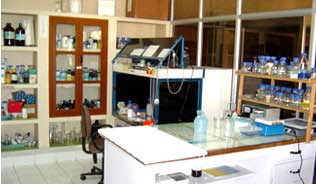 |
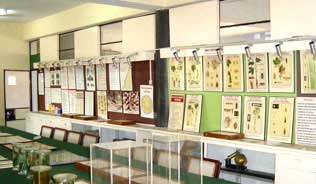 |
| Insect Molecular Biology Laboratory | Plant Clinic Laboratory |
 |
 |
| Mass Rearing of Corcyra - Biological Control Laboratory | Toxicology Laboratory |
 |
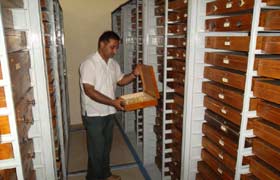 |
| Honey House | National Insect Museum |
 |
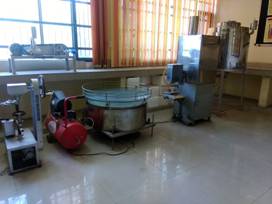 |
| Apiary | Bottling unit |
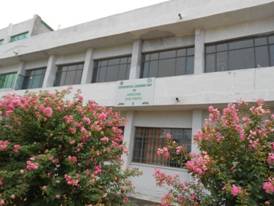 |
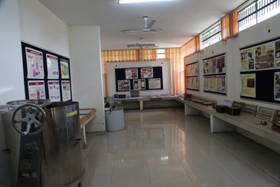 |
| ELP building | Exhibition Gallery Apiculture |
Farm facilities:
- Experimental farm having screen houses for pot or cage studies,
- An apiary for teaching and research purposes,
- Insect Growth Chamber, Environmental Chamber for Research purposes
- Honey House
 |
 |
| Walk-in Climatic Chambers | Field Screen House |
College of Agriculture / Entomology / PG Students
| Sr. No. | Name of the student | Admission No. | Major Advisor | Title of Research Problem |
| 1 | Akanksha Attri | L-2021-A-44-M | Dr Gaurav Kumar Taggar | DAMAGE POTENTIAL OF SPOTTED POD BORER, Maruca vitrata (FABRICIUS) IN Kharif MUNGBEAN AND ITS GENETIC DIVERSITY IN PUNJAB |
| 2 | Arshpreet Singh | L-2021-A-46-M | Dr Manmeet Brar Bhullar | SEASONAL ABUNDANCE AND BIOLOGY OF Schizoterany chuskrungthepensis Naing and Auger INFESTING SUGARCANE IN PUNJAB |
| 3 | Bhawna Saroia | L-2021-A-47-M | Dr Paramjit Kaur | BIOLOGY OF Tetranychus urticae KOCH AND GENETIC DIVERSITY OF MITES ON PEAR |
| 4 | Deepseerat Singh | L-2021-A-48-M | Dr Anureet Kaur Chandi | PHYSIOLOGICAL INFLUENCES OF CYANTRANILIPROLE ON TOBACCO CATERPILLAR, Spodoptera litura (FABRICIUS) |
| 55 | Jaideep Singh Kang | L-2021-A-53-M | Dr K. S. Suri | SILICA INDUCED DEFENSE AGAINST BROWN PLANTHOPPER, Nilaparvata lugens (Stal.) |
| 6 | Lukesh Bansal | L-2021-A-54-M | Dr Sarwan Kumar | APHID-PLANT-NATURAL ENEMIES’ TRITROPHIC INTERACTIONS IN Brassica SYSTEMS |
| 7 | Neha Rani | L-2021-A-55-M | Dr Inderpal Singh | BIOLOGY AND POPULATION DYNAMICS OF Spodoptera litura (FABRICIOUS) ON MUNGBEANS |
| 8 | Suditi | L-2021-A-55-M | Dr Rajwinder Kaur Sandhu | BIOLOGY, SEASONAL INCIDENCE AND MANAGEMENT OF Scirtothrips citri (MOULTON) IN CITRUS |
| 9 | Noor Mahammed | L-2021-A-57-M | Suneet Pandher | DIVERSITY, SEASONAL INCIDENCE AND DAMAGE ASSESSMENT BY OXYCARENUS SPP. ON COTTON |
| 10 | P. Harshvardhan | L-2021-A-58-M | Dr Amandeep Kaur | INFLUENCE OF TEMPERATURE ON GROWTH AND DEVELOPMENT OF Pectinophora gossypiella (Saunders) IN Bt COTTON |
| 11 | Ajaydeep Singh | L-2022-A-37-M | Dr Amit Choudhary | Defensive response of Apis mellifera Linnaeus colonies in various seasons to colony strength and feeding |
| 12 | Arshita Sharma | L-2022-A-38-M | Vikas Jindal | RNA INTERFERENCE MEDIATED KNOCKDOWN OF TACHYKININ RELATED PEPTIDE AND ITS RECEPTOR GENE IN Bemisia tabaci (GENNADIUS) |
| 13 | Harshpreet Kaur | L-2022-A-39-M | Bharathi Mohindru | HYGIENIC RESPONSE OF Apis mellifera LINNAEUS COLONIES INFLUENCED BY SEASONS, COLONY STRENGTH AND NUTRITION |
| 14 | Mehak Kapur | L-2022-A-41-M | Sudhendu Sharma | DISRUPTIVE INFLUENCE OF INSECTICIDES ON Chrysoperla zastrowi sillemi (Esben-Petersen) |
| 15 | Palvi Kaith | L-2022-A-42-M | Dr Prasad Shrikrishna Burange | TAXONOMIC STUDIES ON PENTATOMID BUGS (HEMIPTERA: PENTATOMIDAE) IN PUNJAB |
| 16 | Rajandeep Singh | L-2022-A-45-M | Dr Jaspal Singh | LIFE CYCLE AND COLONY DYNAMICS OF STINGLESS BEE, Tetragonula iridipennis (SMITH) |
| Sr. No | Name of the student | Admission No. | Major Advisor | Title of Research Problem |
| 1 | Jenia Thakur | L-2019-A-34-D | Dr Manmeet Brar Bhullar | PLANT RESISTANCE IN CHILLI TO YELLOW MITE, Polyphagotarsonemuslatus (Banks) AND THRIPS, Scirtothripsdorsalis (HOOD) |
| 2 | Ms. Masrat Siraj | L-2019-A-36-D | Dr Sandeep Singh | BIOLOGY, POPULATION DYNAMICS AND BIO-INTENSIVE MANAGEMENT OF LITCHI FRUIT BORER, Conopomorpha sinensis (Bradley) IN LITCHI |
| 3 | Shushant Tuteja | L-2019-A-39-D | Dr P.S. Shera | DIVERSITY OF NATURAL ENEMIES, HOST–PARASITOID INTERACTION AND BIO-INTENSIVE MANAGEMENT OF Spodoptera frugiperda (J.E. smith) ON MAIZE |
| 4 | Harpreet Kaur | L-2020-A-25-D | Dr Jaspal Singh | BREEDING OF Apis mellifera LINNAEUS FOR ROYAL JELLY PRODUCTION |
| 5 | Sabreena Ashraf | L-2020-A-30-D | Dr Vikas Jindal | DETERMINATION OF MECHANISM OF RESISTANCE IN Pectinophora gossypiella (Saunders) TO BT COTTON IN NORTH INDIA |
| 6 | Ms Shyamli | L-2020-A-32-D | Dr K. S. Suri | INFLUENCE OF ABIOTIC FACTORS ON GROWTH AND DEVELOPMENTAL PHYSIOLOGY OF PINK STEM BORER Sesamia inferens (Walker) ON WHEAT |
| 7 | Sukhpreet Kaur | L-2020-A-34-D | Dr Inderpal Singh | BIOLOGY OF Bemisia tabaci (Gennadius) AND MANAGEMENT OF SUCKING INSECT PESTS IN KHARIF MUNGBEANS WITH BOTANICALS |
| 8 | Vinit Kumar Sonwal | L-2020-A-35-D | Dr Suneet Pandher | IDENTIFICATION AND CHARACTERIZATION OF CYP450 GENES INVOLVED IN INSECTICIDE RESISTANCE IN AMRASCA BIGUTTULA (ISHIDA) |
| 9 | Mr. Jagjeet Singh | L-2021-A-25-D | Dr Gaurav Kumar Taggar | BASES OF RESISTANCE IN INTERSPECIFIC DERIVATIVES OF PIGEONPEA AGAINST Marucavitrata (Fabricius) |
| 10 | Ms Sheikh Salma Irshad | L-2021-A-26-D | Dr Sarwan Kumar | Brassica-Pieris brassicae INTERACTIONS IN CANOLA AND NON-CANOLA CULTIVARS OF OILSEED BRASSICA |
| 11 | Shiwani | L-2021-A-028-D | Dr P.S. Shera | DEMOGRAPHIC PARAMETERS OF Cotesia glomerata (Linn.) AND BIOINTENSIVE MANAGEMENT OF Pieris brassicae (Linn.) ON OILSEEDS AND VEGETABLE BRASSICA |
| 12 | Shveta Thakur | L-2021-A-29-D | Dr Sudhendu Sharma | HOST-PARASITOID INTERACTIONS AND BIO-INTENSIVE MANAGEMENT OF Pectinophora gossypiella (Saunders) on Bt cotton |
| 13 | Mayur Deepak Wabhitkar | L-2021-A-33-D | Dr Manmeet Brar Bhullar | PREDATION EFFICIENCY OF Chrysoperla zastrowisillemi (Esben-Petersen), Blaptostethuspallescens (Poppius) AND Neoseiuluslongispinosus (Evans) AGAINST Tetranychus urticae Koch ON BRINJAL |
| 14 | Robin | L-2021-A-34-D | Dr Paramjit Kaur | MORPHOLOGICAL AND MOLECULAR CHARACTERIZATION OF PHYTOSEIID MITES ON FRUIT CROPS IN NORTH WESTERN INDIA |
| 15 | Himani | L-2022-A-17-D | Vikas Jindal | Not decided yet |
| 16 | Duddela Akhilandeshwari | L-2022-A-19-D | Dr Jaspal Singh | GENETIC DISSECTION FOR HIGH ROYAL JELLY PRODUCTION IN Apis mellifera COLONIES (PROPOSED TOPIC) |
| 17 | Akash | L-2022-A-22-D | Dr Amit Choudhary | Screening of pathogens associated with the European foulbrood disease of Apis mellifera Linnaeus under Punjab conditions (PROPOSED TOPIC) |





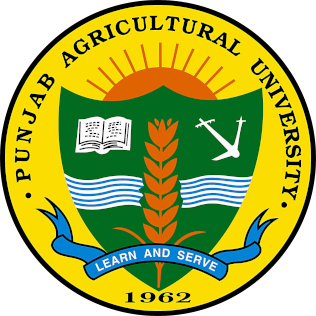
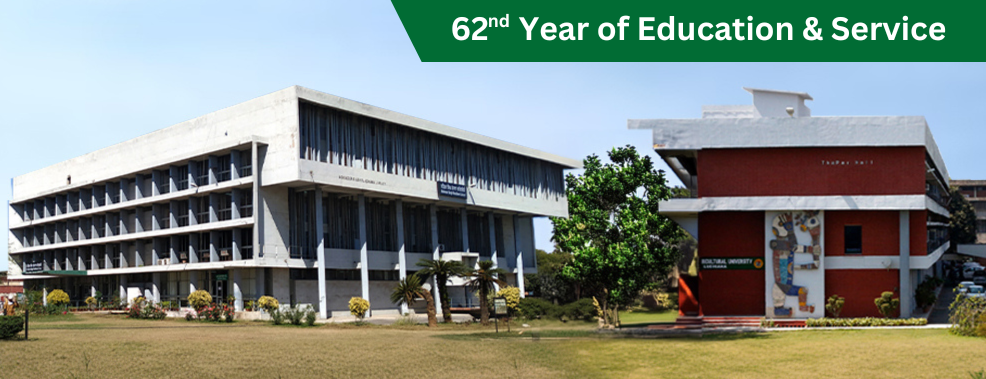
.jpg)